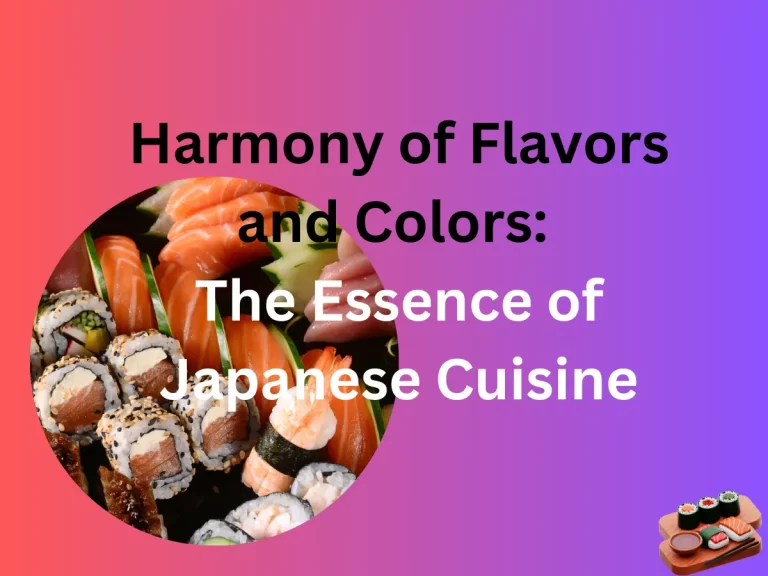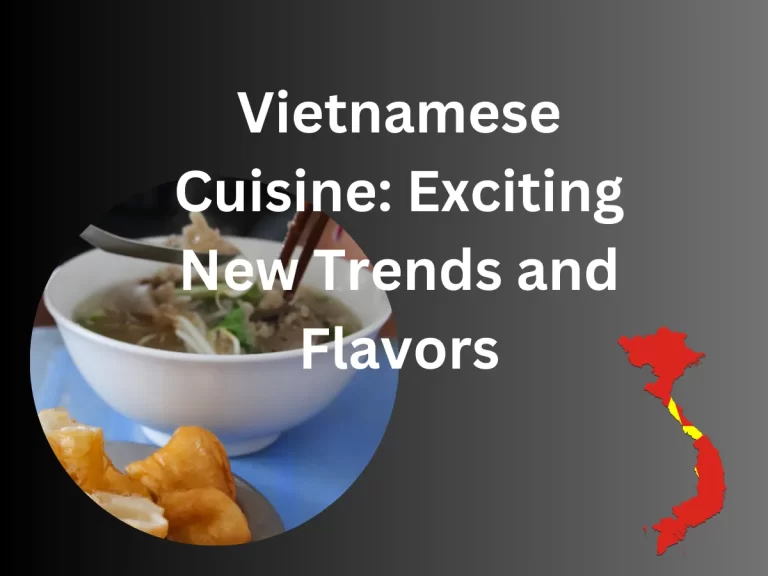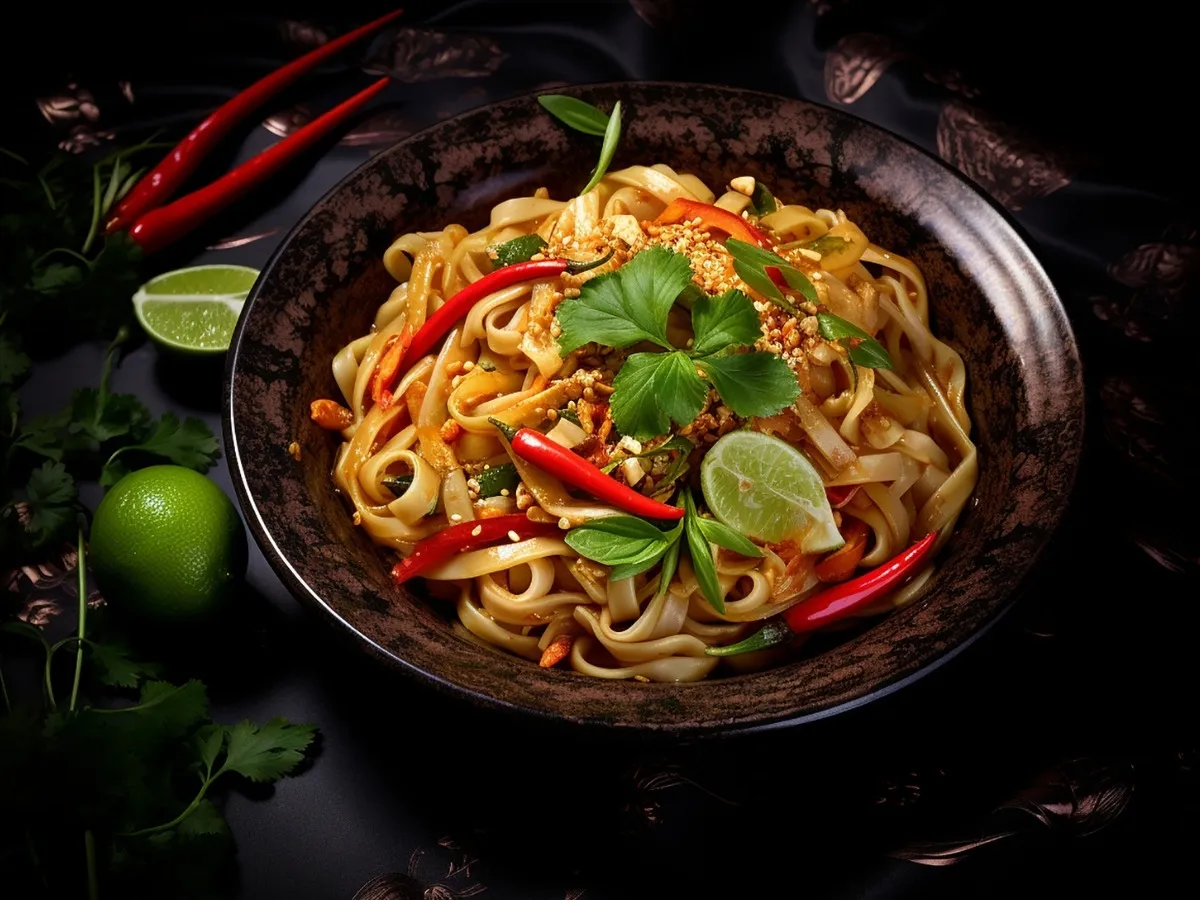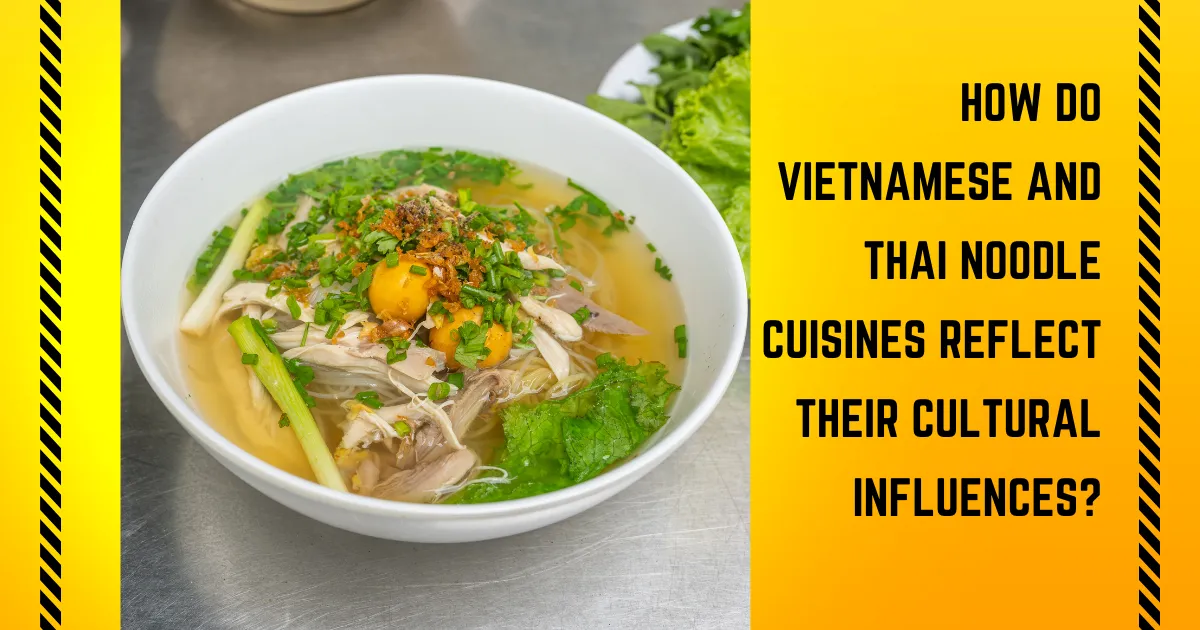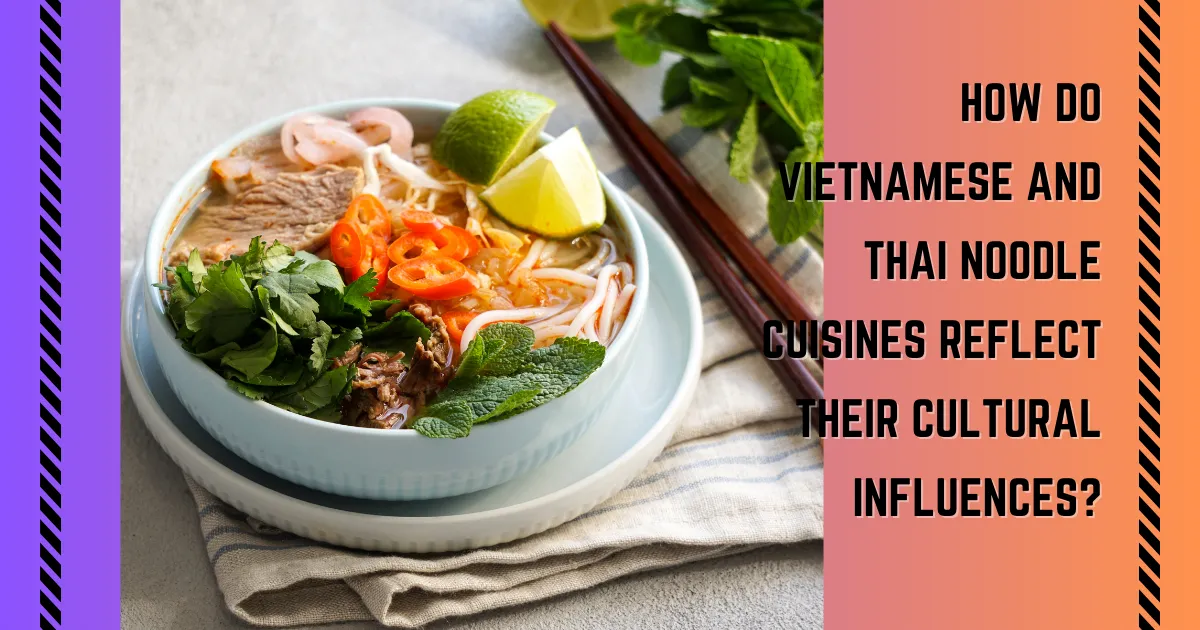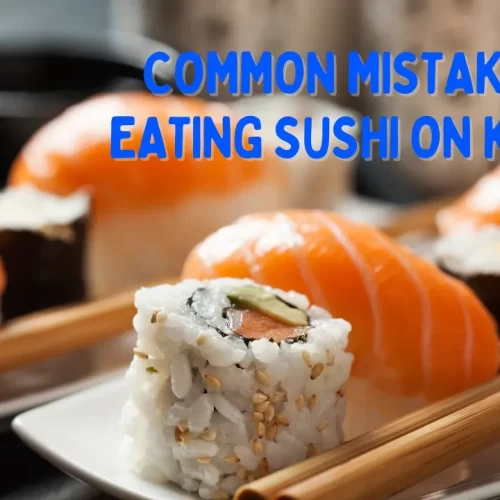Last updated on August 17th, 2025 at 07:30 am
Noodle Vietnamese style: Noodles are at the heart of Vietnamese and Thai cuisine, offering an endless variety of flavors, textures, and aromas. Whether you prefer noodles in a cup from a bustling street vendor or a comforting noodle soup simmering for hours, both cultures have mastered the art of transforming simple ingredients into unforgettable meals.
Noodles Vietnamese style often feature rice noodles paired with fragrant broths, fresh herbs, and thinly sliced meats or seafood. Popular dishes like Pho and Bun Bo Hue demonstrate how balanced flavors can be both deeply satisfying and light. On the other hand, Thai cuisine offers vibrant noodle dishes, such as Pad Thai and boat noodles, as well as rich, coconut-based soups, delivering a perfect harmony of sweet, sour, spicy, and salty flavors.
Here’s a deep dive into the similarities and differences between Thai and Vietnamese cuisine, as nicely as frequently asked questions about these two celebrated cuisines.
For those seeking healthier alternatives, gluten-free noodles—often made from rice or mung beans—allow everyone to enjoy these iconic dishes without compromising taste. Whether served as a hearty noodle bowl packed with vegetables or as noodles in the pot for a family gathering, these dishes bring comfort and connection.
From Vietnam’s bustling food stalls to Thailand’s aromatic night markets, noodles are more than just food—they’re a cultural experience worth savoring. Next time you prepare a meal, explore authentic recipes and create your own Southeast Asian noodle adventure.
Similarities Between Thai and Vietnamese Cuisine
Focus on Freshness
- Both cuisines emphasize the use of fresh herbs and vegetables, such as cilantro, basil, mint, and lemongrass. These ingredients play a vital role in enhancing the dishes’ vibrant flavors.
- Fresh ingredients are often served alongside cooked meals, such as raw greens and herbs paired with pho in Vietnam or fresh vegetables with Thai larb.
Balance of Flavors
- Thai and Vietnamese cuisines aim to balance sweet, salty, sour, and spicy flavors.
- Thai food achieves this with lime juice, fish sauce, palm sugar, and chili.
- Vietnamese dishes use similar ingredients but with a lighter touch, often substituting rice vinegar for lime and favoring mild chili.
- Thai and Vietnamese cuisines aim to balance sweet, salty, sour, and spicy flavors.
Rice is a Staple – The Noodle Shop: Noodle Vietnamese & Thai cuisine.
- Both cuisines rely heavily on rice as a foundational element. Steamed jasmine rice is standard in Thailand, while long-grain or broken rice is used in Vietnam. Rice also forms the basis for noodles, which are central to many dishes in both cuisines.
Street Food Culture – Spice Route: Noodle Vietnamese & Thai cuisine
- Thailand and Vietnam boast thriving street food scenes, offering affordable, flavorful dishes like pad Thai, green papaya salad, grilled meats on skewers, and banh mi, pho, and fresh spring rolls in Vietnam.
- Both countries prioritize accessibility and quick preparation in their street food offerings. The Best Noodles from Vietnamese & Thai Cuisine: A Flavorful Adventure
Fish Sauce as a Key Flavoring Agent
- Fish sauce is indispensable in both cuisines. Known as “nam pla” in Thailand and “nuoc mam” in Vietnam, this umami-rich condiment is used in marinades, as a dipping sauce, and as a seasoning.
Differences Between Thai and Vietnamese Cuisine
1. Flavors and Intensity
- Thai Food: Known for its bold, intense flavors, Thai cuisine frequently combines heat (chili), sweetness (palm sugar), and creaminess (coconut milk). Signature dishes, such as green curry and tom yum soup, highlight these distinct flavor profiles.
- Vietnamese Food: Typically features lighter, more delicate flavors. Vietnamese dishes emphasize the use of fresh herbs and minimal oil, resulting in clean and refreshing meals. Pho, for instance, relies on aromatic spices and herbs for flavor rather than heavy seasonings.
2. Use of Spices – Spice Route: Noodle Vietnamese & Thai cuisine
- Thai Cuisine: Heavily spiced Thai food features ingredients such as galangal, kaffir lime leaves, and various types of curry paste. These spices add depth of flavor and a distinctive heat that defines Thai cuisine.
- Vietnamese Cuisine: While spices are used, they’re typically milder and sparingly. Star anise, cinnamon, and cloves, especially broths like pho, are common in Vietnamese cooking.
3. Cooking Techniques
- Thailand: Wok-frying is a prominent technique in Thai cooking, resulting in stir-fried dishes like pad Thai and drunken noodles. Grilling is also a standard method for cooking meats and seafood.
- Vietnam: Steaming and boiling are more prevalent, particularly in the preparation of broths for noodle soups or the steaming of dumplings and buns.
4. Coconut Milk Usage
- Thailand: Coconut milk is a cornerstone of Thai cuisine, used in curries (like red, green, and massaman), desserts, and even beverages. It provides richness and balances the heat in dishes.
- Vietnam: Coconut milk is less common and is mainly used in desserts or southern Vietnamese dishes. Northern and central Vietnamese cuisine places a greater emphasis on clear broths and straightforward preparations.
5. Signature Dishes
- Thailand: Signature dishes include pad Thai, green curry, tom yum soup, som tam (papaya salad), and massaman curry.
- Vietnam: Standout dishes include pho, banh mi, bun cha, fresh spring rolls (goi cuon), and com tam (broken rice).
6. Influence of Geography and History
- Thai Cuisine: Influenced by neighboring countries such as India, Malaysia, and China, Thai food incorporates a diverse array of spices, noodles, and curry techniques.
- Vietnamese Cuisine: Strongly influenced by French and Chinese traditions. French colonial rule introduced baguettes (used in banh mi), pâté, and coffee culture, while Chinese influence is seen in noodle dishes and the use of soy sauce.
7. Desserts
- Thai Desserts: Often centered around coconut milk, sticky rice, and tropical fruits. Popular options include mango sticky rice, coconut ice cream, and lod chong (pandan noodles in sweet coconut milk).
- Vietnamese Desserts: Focus more on jellies, puddings, and sweet soups like che. Desserts are typically less decadent and rely on simple ingredients like mung beans, coconut, and fruit.
Noodle Soups in Thai and Vietnamese Cuisine
Noodles in Vietnamese & Thai Cuisine: From Pho to Tom Yum
Noodle soups / Noodle Vietnamese & Thai cuisine are a cornerstone of Thai and Vietnamese cuisines, showcasing their unique flavor profiles, regional variations, and cultural significance.
Here’s how they compare and stand out:
Noodles Vietnamese Style You’ll Crave
Pho (Phở)
- Vietnam’s most iconic dish (Noodle Vietnamese), pho, is a noodle soup made with flat rice noodles, a clear and aromatic broth (beef or chicken), and garnished with fresh herbs like cilantro, Thai basil, and green onions.
- Regional Variations:
- Pho Bac (Northern style) is light and subtle, focusing on the clear broth.
- Pho Nam (Southern style) is slightly sweeter and served with a broader range of garnishes like bean sprouts and lime.
Bun Bo Hue (Bún Bò Huế)
- A spicy beef noodle soup from Hue featuring round rice noodles in a robust broth flavored with lemongrass, shrimp paste, and chili oil. It’s more prosperous and more complex than pho.
Hu Tieu (Hủ Tiếu)
- A southern Vietnamese dish with a lighter, sweeter broth, often served with pork, seafood, or a combination of both. Hu tieu can be served with rice or egg noodles, dry or in soup.
Noodle Soup Secrets from Thailand
Tom Yum Noodle Soup (Guay Tiew Tom Yum)
- Combining the flavors of Thailand’s famous tom yum soup with rice noodles, this dish is spicy, sour, and slightly sweet, adding ground pork, lime juice, and fresh herbs.
Khao Soi
- A specialty from Northern Thailand, Khao Soi features egg noodles in a rich, coconut curry-based broth, topped with crispy fried noodles, lime, and pickled mustard greens..
Boat Noodles (Kuay Teow Reua)
- A hearty noodle soup originally served from boats, featuring a thick, flavorful broth made with pork or beef, blood (optional for richness), and fragrant spices.
Kuay Teow Moo Nam Tok
- Similar to boat noodles but focused on pork, this soup is rich, savory, and spiced, often served with thin rice noodles and fresh herbs.
Beef Noodle Soup: Thailand vs. Vietnam
Similarities:
- Base Ingredients: Both Thai and Vietnamese beef noodle soups feature a flavorful broth made from beef bones, often with added spices like star anise, cinnamon, and cloves.
- Noodles: Both cuisines use rice noodles, though the types may differ slightly.
- Meat: Beef is the primary protein, often served in cuts like sliced rare beef, beef balls, or tendon.
- Garnishes: Common additions include fresh herbs like cilantro, basil, and spring onions.
Differences:
- Broth:
- Thai: The broth tends to be richer and more intense, often with a hint of sweetness.
- Vietnamese: The broth is typically lighter and cleaner, focusing on the natural beefy flavor.
- Spices:
- Thai: Thai soups often incorporate lemongrass, galangal, and chilies, resulting in a more pungent and aromatic broth.
- Vietnamese: Vietnamese soups often use ginger, cinnamon, and star anise for a milder, more subtle flavor.
- Noodles:
- Thai: Rice noodles are often broader and flatter.
- Vietnamese: Rice noodles are typically thinner and rounder.
- Garnishes:
- Thai: Common additions include Lime wedges, chili flakes, and sometimes peanuts.
- Vietnamese: Bean sprouts, lime wedges, and a variety of sauces like hoisin sauce and sriracha are often provided.
Spice & Silk: Noodle Vietnamese & Thai cuisine:
In essence, Thai beef noodle soup offers a bolder, more complex flavor profile, while Vietnamese beef noodle soup emphasizes a clean, delicate broth and a focus on fresh ingredients.
The Noodle Vietnamese & Thai Cuisine – Q & A
What are the critical differences between Thai and Vietnamese pho-noodle Vietnamese & Thai cuisine?
- Thai “pho” is a noodle soup akin to tom yum or tom kha, featuring bold flavors and spicy broths. Vietnamese pho, however, is a lighter, aromatic soup with rice noodles, fresh herbs, and a savory beef or chicken broth.
Which cuisine is spicier: Thai or Vietnamese?
- Thai cuisine is typically spicier due to its heavy use of chili and curry pastes. Vietnamese food tends to be milder, relying on fresh herbs and subtle seasonings.
What are common breakfast foods in Thailand and Vietnam?
- Thailand: Jok (rice porridge), fried dough sticks (patongo), and stir-fried rice noodles.
- Vietnam: Pho, banh mi, or sticky rice with various toppings.
Which cuisine is healthier: Thai or Vietnamese?
- Both cuisines can be healthy, but Vietnamese food is often lighter due to its emphasis on fresh vegetables and herbs and minimal use of oils. With their coconut milk and fried foods, Thai dishes may be more decadent and higher in calories.
Can you find vegetarian options in Thai and Vietnamese cuisine?
- Yes! Thai cuisine offers vegetable curries, stir-fried tofu, and som tam without fish sauce. Vietnamese cuisine includes vegetarian pho, banh mi with tofu, and fresh vegetable spring rolls.
Are street foods safe to eat in Thailand and Vietnam?
- Both countries have vibrant street food scenes. Generally, choose stalls with high turnover and freshly prepared food to ensure safety.
What are the best beverages to pair with Thai and Vietnamese food?
- Thai food pairs well with light beers, iced teas, or sweet Thai iced tea. Vietnamese food pairs beautifully with Vietnamese iced coffee, green tea, or light white wines.
Why Are Noodle Vietnamese & Thai Cuisine So Popular Worldwide?
- Vietnamese and Thai noodle cuisines have captured the hearts and palates of people across the globe, becoming staples in both casual dining and fine dining scenes. Their popularity can be attributed to a unique blend of cultural authenticity, bold flavors, and versatility.
How Do Noodle Vietnamese & Thai Cuisines Reflect Their Cultural Influences?
The noodle dishes of Vietnam and Thailand are not only culinary masterpieces but also reflections of each country’s history, geography, and cultural interactions. These dishes tell stories of trade routes, colonial influences, and regional diversity, blending traditional flavors with external elements to create unique, beloved meals.
Golden Broth: Noodle Vietnamese & Thai cuisine
- Are You Excited Of The Magic Of Filipino Food?
- Japanese Cuisine: A Great Feast of Colors and New Flavors
- The Faith and Incredible Ethiopian Coffee Ceremony: Love It!!
- Vietnamese Cuisine: Exciting New Flavors and Happy Trends

